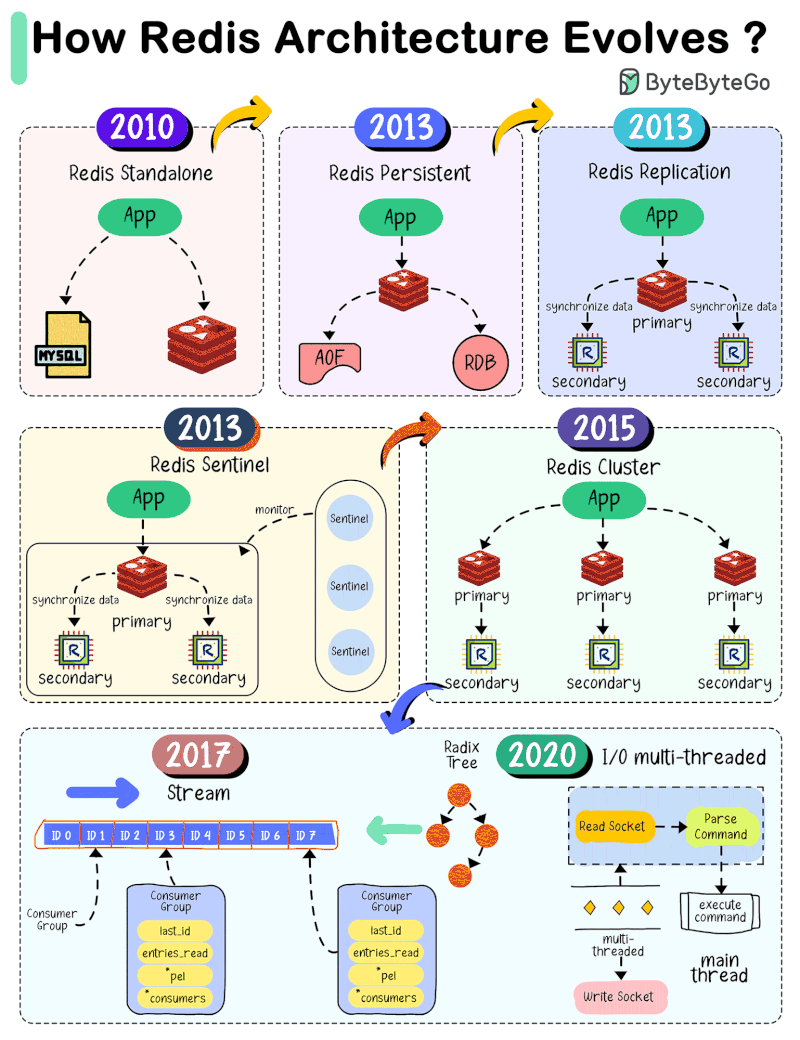
Rome wasn’t built in a day.
How does Redis architecture evolve?
Redis is a popular in-memory cache. How did it evolve to the architecture it is today?
🔹 2010 - Standalone Redis
When Redis 1.0 was released in 2010, the architecture was quite simple. It is usually used as a cache to the business application.
However, Redis stores data in memory. When we restart Redis, we will lose all the data and the traffic directly hits the database.
🔹 2013 - Persistence
When Redis 2.8 was released in 2013, it addressed the previous restrictions. Redis introduced RDB in-memory snapshots to persist data. It also supports AOF (Append-Only-File), where each write command is written to an AOF file.
🔹 2013 - Replication
Redis 2.8 also added replication to increase availability. The primary instance handles real-time read and write requests, while replica synchronizes the primary’s data.
🔹 2013 - Sentinel
Redis 2.8 introduced Sentinel to monitor the Redis instances in real time. is a system designed to help managing Redis instances. It performs the following four tasks: monitoring, notification, automatic failover and configuration provider.
🔹 2015 - Cluster
In 2015, Redis 3.0 was released. It added Redis clusters.
A Redis cluster is a distributed database solution that manages data through sharding. The data is divided into 16384 slots, and each node is responsible for a portion of the slot.
🔹 Looking Ahead
Redis is popular because of its high performance and rich data structures that dramatically reduce the complexity of developing a business application.
In 2017, Redis 5.0 was released, adding the stream data type.
In 2020, Redis 6.0 was released, introducing the multi-threaded I/O in the network module. Redis model is divided into the network module and the main processing module. The Redis developers the network module tends to become a bottleneck in the system.